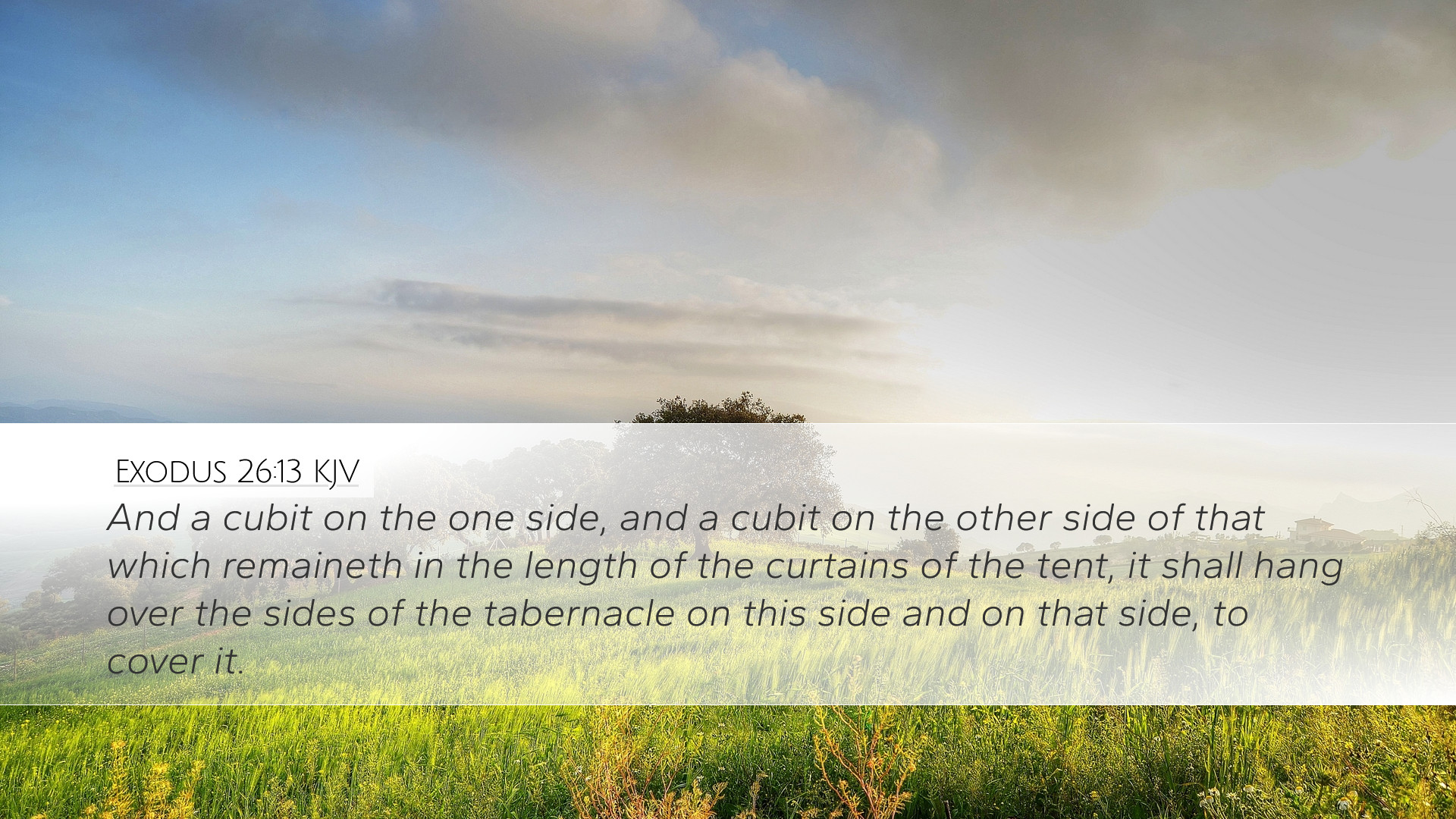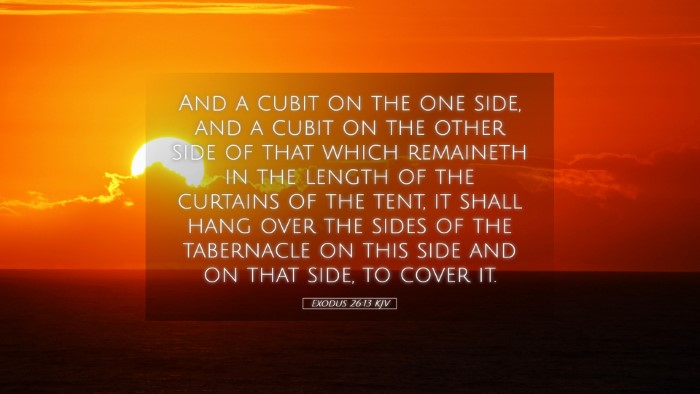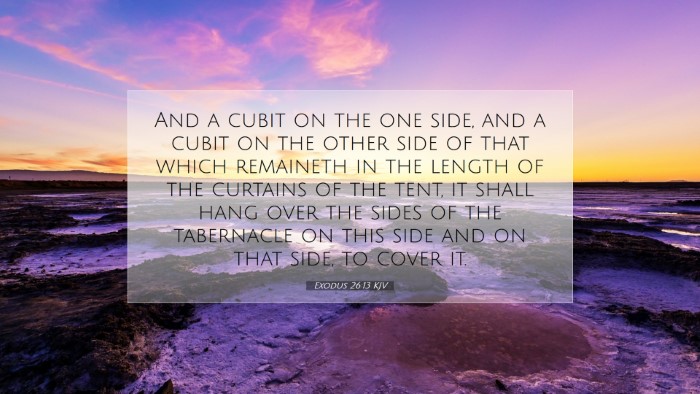Commentary on Exodus 26:13
Verse Text: "And the remnant that remaineth of the curtains of the tent, the half curtain that remaineth, shall hang over the backside of the tabernacle." (Exodus 26:13, KJV)
Introduction
This verse comes from the detailed instructions given by God to Moses concerning the construction of the Tabernacle in the wilderness. The significance of the Tabernacle, both in its physical attributes and its theological implications, cannot be overstated in the Old Testament narrative. This commentary synthesizes insights from well-known public domain commentators to provide a comprehensive interpretation of Exodus 26:13.
Understanding the Context
Exodus 26 outlines the construction of the Tabernacle, which served as a portable dwelling place for God among His people during their journey through the desert. The design was intricately specified by God, reflecting His holiness and the need for proper worship.
Material and Structure
In verses leading up to 26:13, God describes the materials (fine linen, goat's hair, and ram skins) that were to be used. Each type of fabric symbolizes something significant, often interpreted as representing aspects of Christ's character and the New Covenant.
Analysis of Exodus 26:13
The Remnant of the Curtains
According to Matthew Henry, the term “remnant” indicates a care for the resources given by God. It serves as a reminder that nothing should be wasted, emphasizing stewardship among God’s people.
Albert Barnes notes that the structural stability of the Tabernacle relied on the careful arrangement of its curtains. The hanging of the remnant curtain over the backside protects and completes the structure, which may symbolize God’s completeness and provision.
Spiritual Implications
Adam Clarke highlights the theological significance of the Tabernacle as a type of Christ. Each part of the Tabernacle points towards the fulfillment found in Jesus. The remnant of the curtain, which covers the backside, reminds believers of Christ's atoning work that continually covers and protects believers.
Symbolism of the Curtains
- Divine Protection: The coverage provided by the remnant suggests a protective aspect of God’s presence.
- Completeness: The meticulous detail of the curtains represents God's desire for order and completeness in worship.
- Reflection of God’s Glory: The curtains, made from beautiful material, reflect the inherent glory of God, teaching us about the nature of holiness.
Theological Reflections
This verse serves as a profound reminder for modern worship. As ministers and theologians evaluate the significance of the Tabernacle, they are prompted to consider how their own lives reflect the divine order and beauty represented in this ancient structure.
Lessons for Ministry
The details of the Tabernacle encourage pastors to approach the ministry with reverence, understanding that every detail matters in worship and service to God.
Worship and Stewardship
Stewardship of Resources: Just as the Israelites were instructed to use every remnant available, today’s church is called to be wise and responsible stewards of the resources God provides.
Conclusion
Exodus 26:13 encapsulates principles of stewardship, completeness, and divine protection in worship. By reflecting on this verse, pastors, students, and theologians can gain deeper insights into how the Old Testament foreshadows the New Testament truths revealed in Christ. The Tabernacle not only provided a space for worship during the Israelites’ desert journey but continues to inform the church's understanding of God's presence among His people today.


